Pencoed academy tackles NHS Wales radiologist shortage
- Published
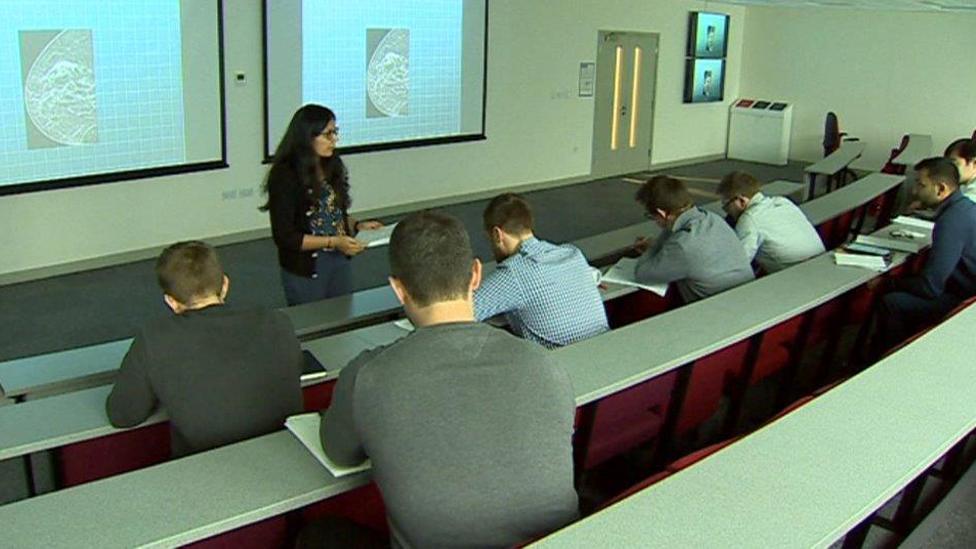
The first trainees started last August
The head of a new NHS academy believes it can be a "game changer" in training more radiologists to meet a shortfall in Wales.
Technological advances mean more and more patients are given scans to help in their diagnosis and treatment.
But current staff have been struggling to cope with demand.
The National Imaging Academy Wales has officially opened in Pencoed, Bridgend county, with the potential to more than double training places in Wales.
Radiology provides scanning and X-Rays and analyses images to provide a medical opinion on what patients are suffering from.
In Wales, capacity up until now has been growing at 6% a year, compared with 34% in England.
The first 14 trainees started their five-year courses at the academy - set up with £3.4m Welsh Government funding and a capacity for 20 trainees - in August. They will split their time between the academy and hospital wards.
It means the total number of trainees across Wales could rise from 43 in 2015 to 100 a year.
As well as training more radiologists and radiographers, the academy also has computer links to every hospital in Wales, so scans of patients from across the NHS can be accessed.
This also means consultants involved in training can save time by being able to work from the academy.
Rising demand
About 40,000 patients are referred for radiology every month in Wales - compared with about 24,000 a decade ago.
As well as "top to toe" imaging, the role of radiologists at the heart of early cancer diagnosis has recently been recognised.
Academy director Dr Phillip Wardle said expectations were also higher.
"We're the victims of our own success - we can do more and we're also using the advancing technologies as we push on," he said.
"As an example, CT and MRI have been increasing in demand on average 10% a year since 2004 but the training has not been able to keep up."
Dr Sian Phillips said radiology has become central to what the NHS does
Dr Sian Phillips, consultant radiologist at the Princess of Wales and Neath Port Talbot hospitals, is responsible for overseeing training in Wales.
"Capacity and demand has mismatched for many years," she said.
"With technology advances for instance, if you think about CT scans, 20 years ago it was 100 images of the body, if you look at it now it can be up to 5,000 images. So that same person is diagnosing and analysing those images, so you need far more people to get you a more accurate diagnosis - and we're scanning more people, more frequently.
"We can just about scan most patients within four to eight weeks but there is a challenge to meet those diagnostic targets to report those scans. It clogs up the system because most modern healthcare pivots around what the scan shows."

Dr Ayesha Khatib using a simulator which helps develop techniques for using scanner probes
Fourth-year radiology trainee Dr Ayesha Khatib, from Cardiff, studied medicine in London but has come back to south Wales to finish her training - and hopes it will attract more trainees into Wales.
She has been won over to the academy system and said it included protected teaching time, as well as the experience gained inside hospital.
"It creates a balance between having intensive training in terms of protected time, dedicated sub-specialist consultants teaching you very specific cases and specific learning points and then taking that back to the shop floor and into the hospital," she said.

Radiology milestones - in pictures
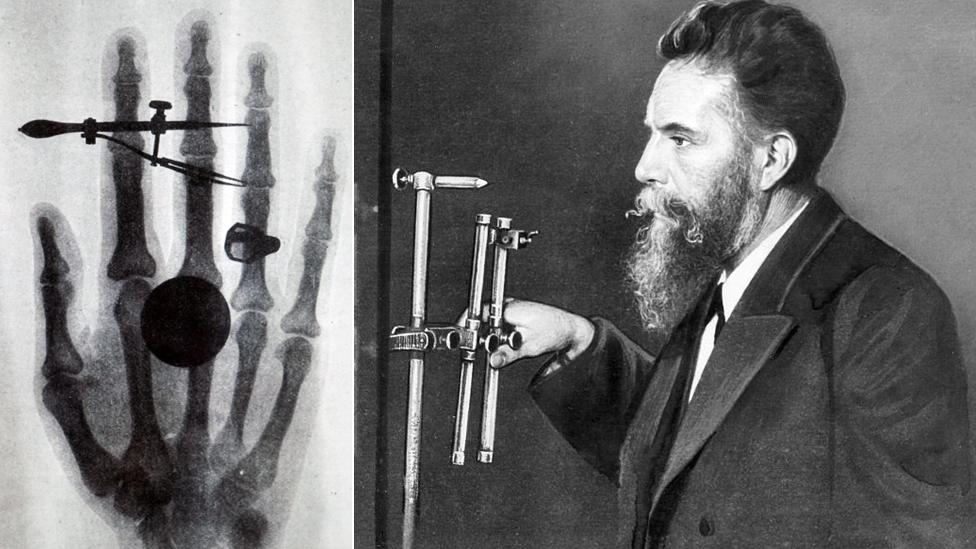
1895: German physicist Wilhelm Röntgen discovered X-Rays - and his work earned him the Nobel Prize in 1901
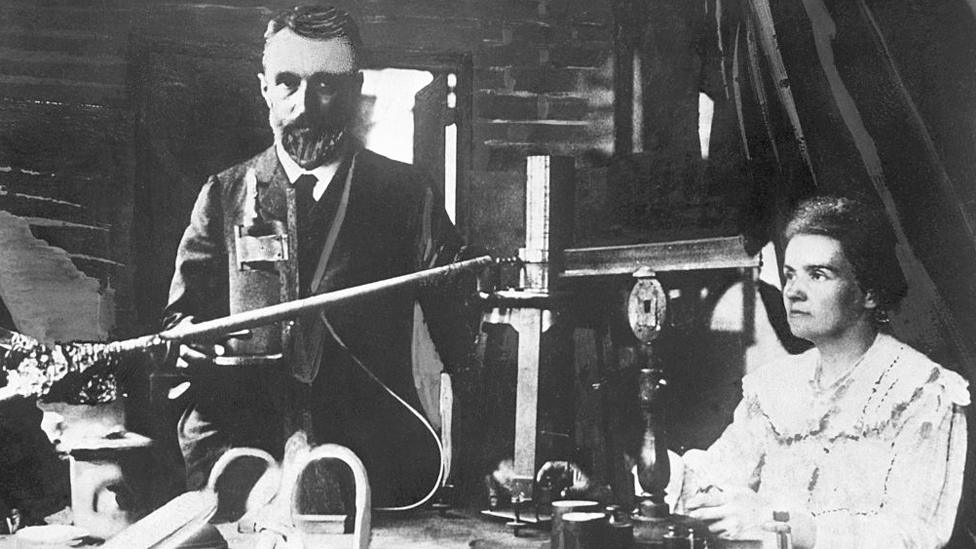
1898: Marie and Pierre Curie's experiments discovered that radium killed diseased cells
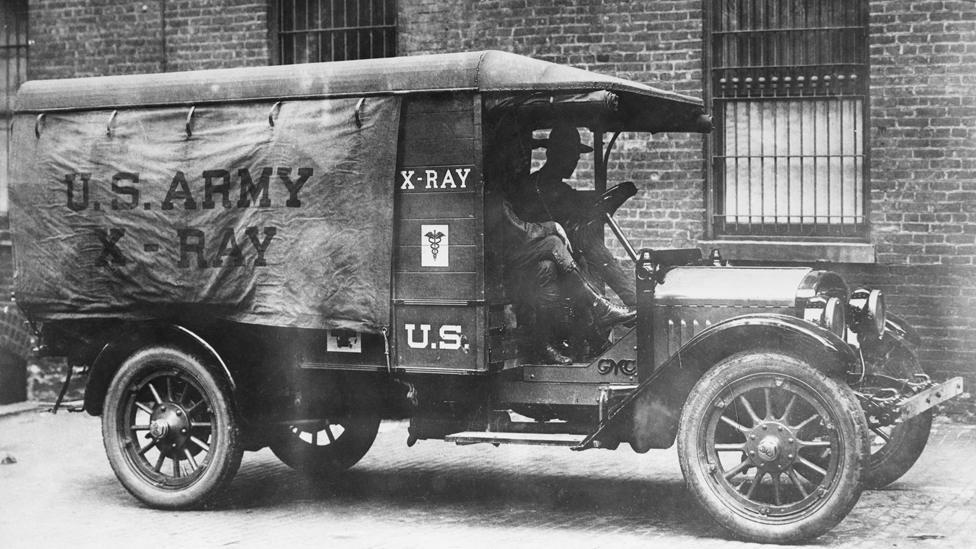
1914-18: X-Rays during World War One led to more widespread use by physicians

1934: The British Association of Radiologists was founded
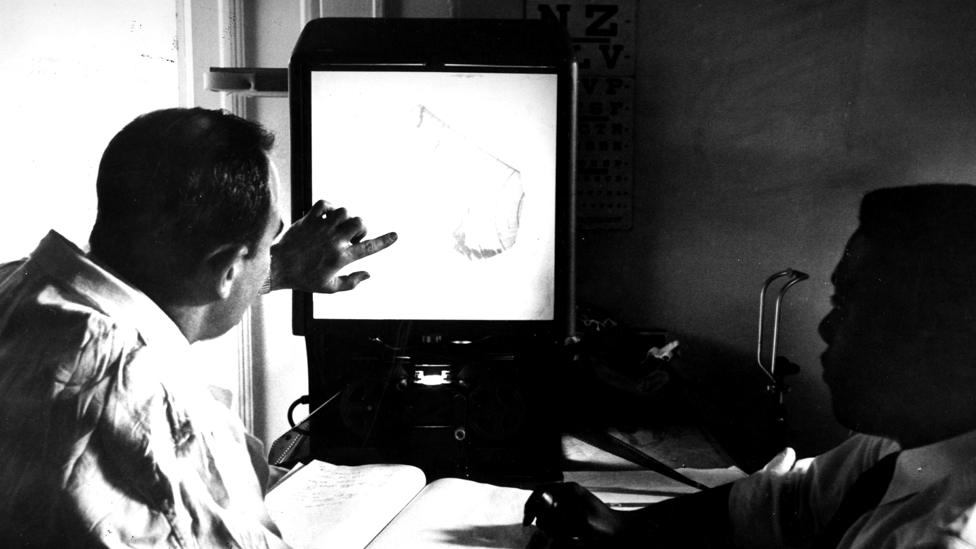
1950s: Ultrasound started, while X-Ray and imaging technology improved
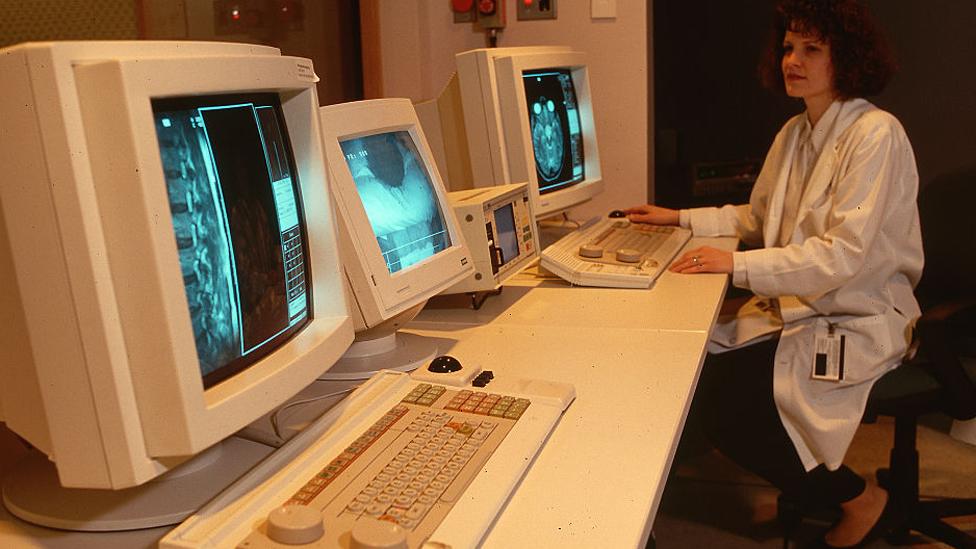
1967: MRI scanning started to be used in hospitals and improvement in technologies continued into the 1970s and 1980s offering more intensity and better images
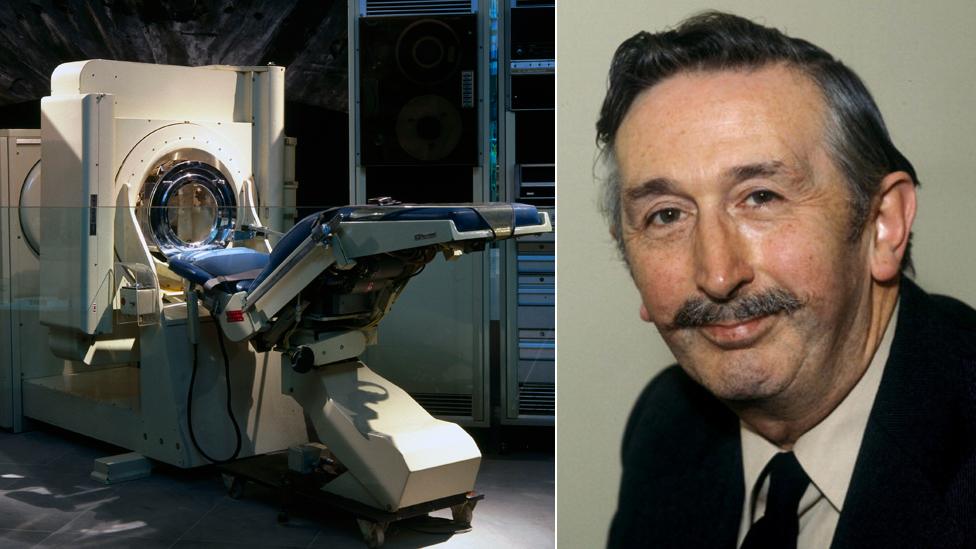
1972: Godfrey Hounsfield (right) and radiologist James Ambrose discovered the principles of CT scanning - with investment from EMI from profits from Beatles records
2016: Cardiff University's £44m Cubric brain imaging centre contains the most advanced neuroimaging equipment in the world
There are three academies in England but this is the first in Wales and Dr Wardle believes it can be a "game changer".
"Radiology is privileged in that many junior doctors want to train in it, therefore there is more potential to fill training places than in specialties which are less popular," said Dr Wardle.
There are hopes artificial intelligence (AI) will in the future be involved in the process of analysing images - and the academy is positioned to be involved.
Dr Toby Wells, secretary of the Royal College of Radiologists' standing Welsh committee and lead for radiology in Wales, said the academy meant they now had the teaching expertise and equipment to educate the next generation of radiologists that the nation "so desperately needs".
"However, in order to see the benefits of the Welsh Government's substantial investment in the academy we need a sustained investment in trainees - starting now. Without them it's just a building," he said.
"If we can realise the potential of the academy and train more radiologists it will lead to huge benefits to patients across Wales - we'll have reduced waiting times for scan results, better access to specialist and subspecialist expertise and be able to cut hospitals' use of expensive outsourcing companies."
Health Minister Vaughan Gething said it was a "prime example of the Welsh Government investing in our future workforce, delivering the highest quality training in state-of-the-art facilities".
- Published22 August 2018

- Published14 July 2017
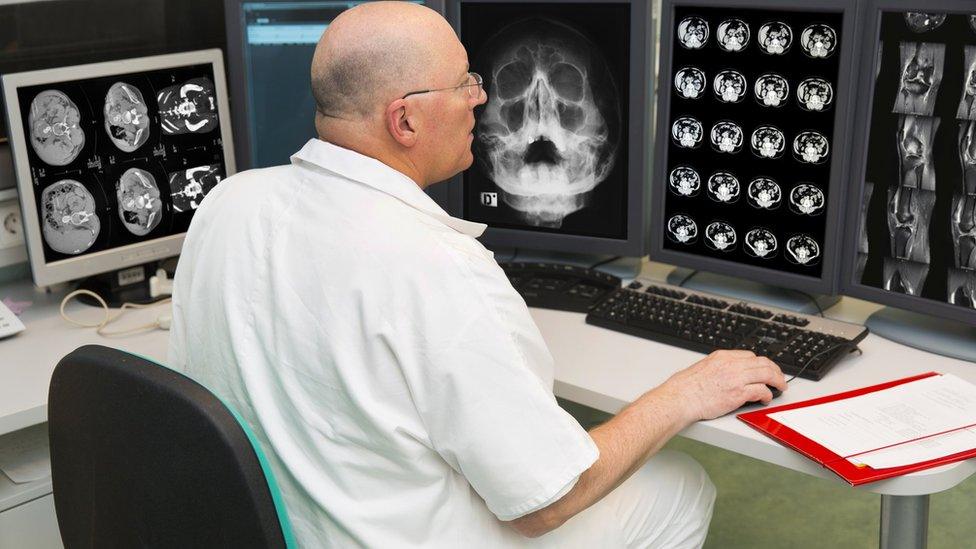
- Published14 August 2018
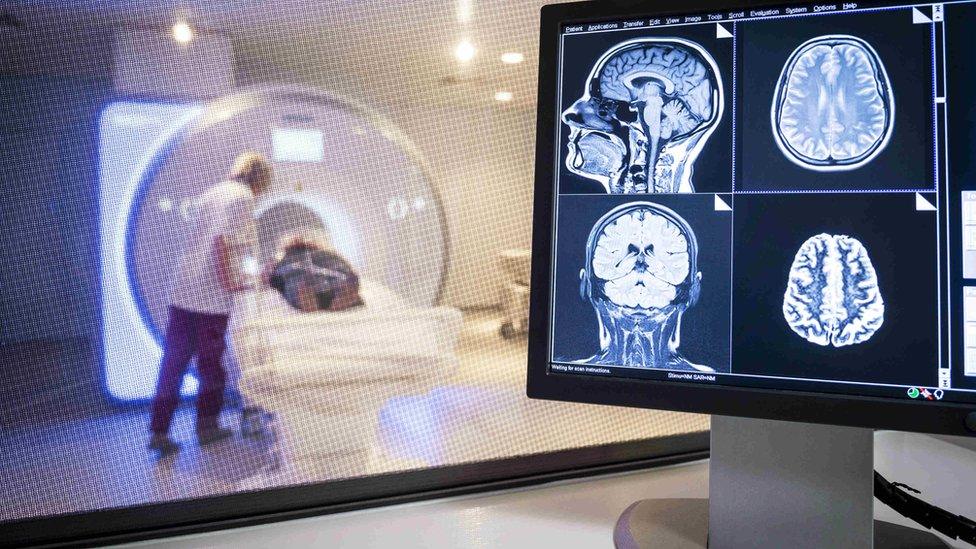
- Published19 July 2018
